-
Japan attempts "cold shutdown" at reactor no. 1

Officials at the Tokyo Electric Power Company (TEPCO) hope to bring reactor no. 1 at the beleaguered Fukushima Daiichi nuclear plant to a “cold shutdown” by the end of the week; plant operators will attempt to bring the temperature inside the reactor below the boiling point of water so that it will no longer produce radioactive steam; the building housing reactor no. 1 must be vented so that all the radioactive air that has accumulated is released allowing workers to approach the reactor; once inside workers will inject cold water into the reactor’s primary containment structure; injecting tons of water into a damaged containment unit that houses uranium makes some scientists uneasy
-
-
Recipe for radioactive materials helps in studies of nuclear waste and fuel storage pools
Easy-to-follow recipes for radioactive compounds like those found in nuclear fuel storage pools, liquid waste containment areas, and other contaminated aqueous environments have been developed by researchers at Sandia National Laboratories; the trick to the recipes is choosing the right templates; these are atoms or molecules that direct the growth of compounds in much the way islands act as templates for coral reefs
-
-
Dynasil wins DHS award for radiation detection
Dynasil Corporation’s research division, Radiation Monitoring Devices, Inc. (RMD), was recently named DHS’ small business winner for radiation and nuclear detection for 2011; the award is meant to honor small businesses that are excelling in innovative achievement and demonstrate a commitment to national security; RMD was recognized particularly for its development of two new radiation detection materials, strontium iodide and CLYC crystals; DHS is especially keen to develop these new radiation detection materials as the current industry standard, helium-3, is suffering from major shortages
-
-
Fears over nuclear energy stall Kentucky nuclear plans
Days before the 11 March earthquake and tsunami struck Japan causing its ongoing nuclear crisis, a bill that would have eased restrictions on the construction of a nuclear power plant in Kentucky failed to pass the state legislature dashing the hopes of atomic energy advocates; the proposed site currently houses a uranium enrichment facility, but it is expected to be shut down in the near future leaving 1,200 people out of work; safety advocates are concerned because the site is located near the New Madrid seismic zone; Kentucky generates 90 percent of its power from coal, and Governor Beshear proposed in 2008 to use nuclear power to generate 30 percent of the state’s energy by 2030
-
-
Cooling pools or dry casks for nuclear waste: which is safer
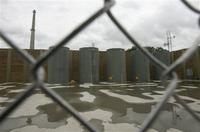
There are two ways to store nuclear waste: in pools of water, where the densely packed uranium rods are cooled by a constant flow of circulating water, or in dry casks — typically barrel-shaped steel-and-concrete structures that stand twenty feet high and sit outdoors — where the uranium loosely packed rods are cooled by passive air; there are 65,000 tons of nuclear waste in the United States, more than in any other nation, and this amount grows by about 2,200 tons each year; the Fukushima disaster demonstrated that dry casks were able to withstand the 11 March combination of earthquake and tsunami much better than cooling pools; the U.S. Nuclear Regulatory Commission must now decide whether cooling pools are safe enough to store nuclear waste, and even whether densely packing nuclear waste is safe
-
-
Chernobyl radiation did not damage abundance, diversity of aquatic life
A new study of the lakes in and around Chernobyl’s fallout zone reveals that radiation from the nuclear accident appears to have had no long term effect on the abundance or diversity of aquatic animal life; no evidence was found that the abundance or diversity of the animal communities was influenced by direct contamination from the Chernobyl accident; indeed, the most contaminated lake, Glubokoye, 6.5 km north of the nuclear power plant, supported the most animal diversity of those lakes studied
-
-
New material cleans water of radioactive contamination
NC State researchers develops material to remove radioactive contaminants from drinking water; the material is a combination of forest byproducts and crustacean shells; the new material not only absorbs water, but can actually extract contaminates, such as radioactive iodide, from the water itself; this material, which forms a solid foam, has applications beyond radioactive materials
-
-
NRC inspects Nebraska reactor radiation exposure
On 3 April, workers at the Cooper Nuclear Station, located near Brownville, Nebraska removed a long tube contaminated with highly radioactive material through the bottom of the reactor vessel, rather than through the top as is usually done, triggering radiation alarms; the NRC is investigating
-
-
DHS: U.S. unprepared for nuclear disaster
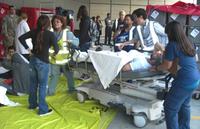
Confidential DHS report says the United States is ill-prepared for a nuclear disaster — either an accident or a terrorist attack; just one example: if a major nuclear bomb were to hit Washington, D.C., there would be a need for about 61,000 beds in intensive care units; there are, however, only 118,000 intensive care beds in the entire United States and, on any given day, only 9,400 are free.
-
-
Concerns about Illinois nuclear safety trigger inspections
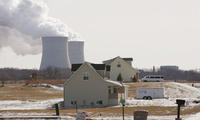
The U.S. Nuclear Regulatory Commission (NRC) is currently performing Special Inspections at the Byron and Braidwood Nuclear plants in Illinois after issues were identified in February and March of 2011; at issue is the ability of pumps to cool the reactor in case of a reactor trip or any reason the system for heat removal became unavailable at both Byron and Braidwood stations which are similar in design
-
-
Easing contamination fears in Japan's food industry
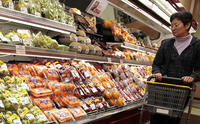
With much of Japan’s manufacturing sector, land, and critical infrastructure badly damaged from the March 11 earthquake and tsunami, dairy and rice manufacturers have struggled to produce enough to feed the nation; Japan produces all of its own milk, rice, and yogurt products, but domestic plants are operating far below full capacity; shortages may persist into the summer; as production ramps up, fears of contamination from radiation leaked from the Fukushima Daiichi nuclear power plant may dampen consumption; one analyst suggests that Japan institute a food tracking program that will allow consumers to track the production of food every step of the way to help ease fears
-
-
IAEA: after Japan, no more nuclear "business as usual"
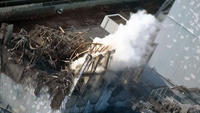
The world cannot take a “business as usual” approach to nuclear power in the wake of the disaster in Japan, UN atomic watchdog chief Yukiya Amano said; “Thinking retrospectively, the measures taken by the operators as a safety measure (were) not sufficient to prevent this accident,” Amano said; he added that the crisis in Japan caused by the 11 March earthquake and tsunami “has enormous implications for nuclear power and confronts all of us with a major challenge”
-
-
Subterranean salt beds to keep U.S. nuclear waste
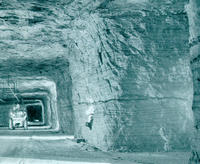
Beds of salt up to one kilometer thick lie within one or two kilometers of the surface across much of the United States; they were deposited hundreds of millions of years ago by evaporating seas; a new study suggests that since President Obama killed the only national nuclear waste burial program — the Yucca mountain site — the United States should look again at the pre-Yucca plan to bury nuclear waste in subterranean salt beds
-
-
Algae might help reduce nuclear waste
The humble algae — Closterium moniliferum — might one day soon be used to help separate strontium from calcium in nuclear waste; if successful, the process could lead to a reduction in the amount of nuclear waste that is left over from nuclear power facilities, and might even help in cleanup when accidents occur such as the one in Chernobyl, Ukraine, that spewed great quantities of strontium into the surrounding environment
-
-
Japan widens evacuation radius
Japanese officials have enlarged the evacuation zone around the Fukushima Daiichi power plant, as workers continue their struggle to repair the damaged nuclear reactors; last Friday a “voluntary evacuation” of people still living within nineteen miles of the plant was issued; residents within nineteen miles have remained indoors unable to leave their homes to purchase basic supplies and companies have refused to deliver; the voluntary evacuation could add an even greater strain to existing temporary shelters; currently 242,881 people are still living in shelters around the country and officials are struggling to provide enough basic supplies like food, water, and sanitary goods
-
- All
- Regional
- Water
- Biometrics
- Borders/Immig
- Business
- Cybersecurity
- Detection
- Disasters
- Government
- Infrastructure
- International
- Public health
- Public Safety
- Communication interoperabillity
- Emergency services
- Emergency medical services
- Fire
- First response
- IEDs
- Law Enforcement
- Law Enforcement Technology
- Military technology
- Nonlethal weapons
- Nuclear weapons
- Personal protection equipment
- Police
- Notification /alert systems
- Situational awareness
- Weapons systems
- Sci-Tech
- Sector Reports
- Surveillance
- Transportation
Advertising & Marketing: advertise@newswirepubs.com
Editorial: editor@newswirepubs.com
General: info@newswirepubs.com
2010-2011 © News Wire Publications, LLC News Wire Publications, LLC
220 Old Country Road | Suite 200 | Mineola | New York | 11501
Permissions and Policies
Editorial: editor@newswirepubs.com
General: info@newswirepubs.com
2010-2011 © News Wire Publications, LLC News Wire Publications, LLC
220 Old Country Road | Suite 200 | Mineola | New York | 11501
Permissions and Policies
